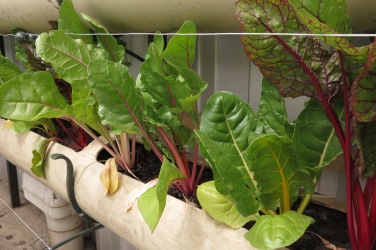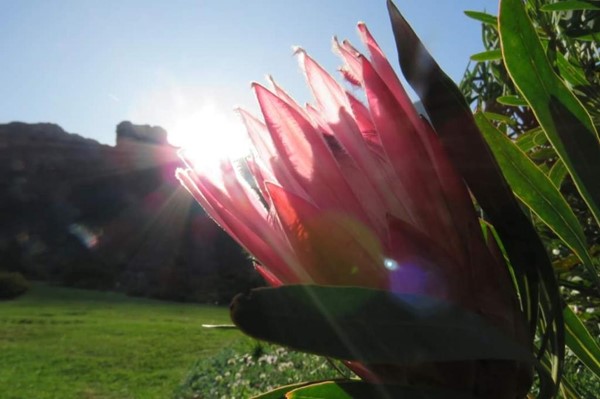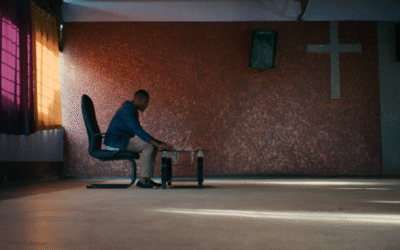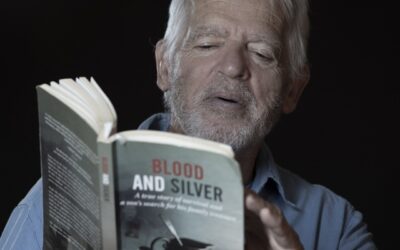The vertical food garden prototype at Langa crèche – “designed to inspire a new approach to doing things” – thrives despite heavy winter conditions.
Cape Town Green Map reported on the vertical garden installed at the Gege Crèche in Langa, which was part of a Mandela Day initative to assist in the re-building of a dilapidated crèche – visit. The crèche, home to 40 children between the ages of 3 and 7, was re-built on Mandela Day to celebrate his gift of light and life.
“We used this as a opportunity to further our work aimed at designing low-cost structures that are safer, more dignified, and address the issues of food-security in simple and meaningful ways. We therefore took the opportunity to design and built a structure that would stimulate debate and hopefully inspire new approaches to doing things”, reports Stephen Lamb of Touching the Earth Lightly.
The design brief was to pilot a “human-hearted” response to unsafe temporary structures, and to re-interpret them as safer, more dignified place of living, while the pressures of formal housing are being addressed by government. This as a temporary solution only. A vertical food garden onto the sun-facing wall was added. The vegetables produced onside would contribute to the two meals being fed to the children each day.
The design of the structure talks to nutrition as well, not just the issues of safety and more dignified living.
Food security and temporary housing therefore become the same thing, and herald a new food-security design approach within the context of vulnerable communities. Current thinking presumes informal settlements and slum areas to be essentially “full”. Indeed they are, but the sun-facing walls are all empty.
Each structure “owns” it’s sun-facing wall.
If you do the maths on the total m2 area available for urban-farming in informal settlement areas it starts to get really exiting…the process of re-purposing and re-defining space and space-use around the needs of the poorest within our city. Not only because it’s a local response to local problems, but because it’s a local response to a global problems – these being food security, flooding and run-away shack/slum fires.
The result is a simple, cost-efficient, low-tech, flood-proof, fire-proof, warm, dry, food-producing haven.
Touching the Earth Lightly were a funder of the project. The project was further made possible with the support of the Handspring Puppet Company, Pick ‘n Pay, The City of Cape Town (who provided the introduction to the project and a truck for transport of materials), Green Cube Nursery and the Eranda Foundation.
via Cape Town Green Map.








